|
At the end of March 2022, Preserve WV AmeriCorps members participated in a windows restoration project at Pricketts Fort State Park in Fairmont, WV. Restoration was completed on five of the windows in the Job Prickett house. The farmhouse was constructed in 1859 by Job Prickett, the great-grandson of Captain Jacob Prickett, and it is located just outside the recreated 18th century fort. The first portion of the project consisted of a two-day workshop led by Derrick Smith of Belmont College and the Smith Family of Workshops LLC and Kellie Ahmad of Rust Belt Restoration LLC. Preserve WV AmeriCorps members were joined by AmeriCorps members from the Appalachian Forest National Heritage Area and members of the public for the training. During the workshop participants received instruction on window anatomy, repair tools and techniques, and the care of historic wooden windows. The group then worked to assess the condition of the Job Prickett house windows and remove those selected for restoration work. Instructors Smith and Ahmad then led the group through hands-on training in the process to remove old glazing, clean the glass panes, remove the paint and make any necessary epoxy repairs, replace the glass panes, re-glaze the windows, and then prime and paint the sashes. After two-days of training, Preserve WV AmeriCorps members completed two additional workdays to sand, repair, and re-glaze the ten window sashes (two per window) under the guidance of Kellie Ahmad. The first day the members worked on removing the old glazing from each pane and cleaning each piece of glass, sanding the sashes, and making any necessary repairs. After letting the epoxy repairs dry overnight, on the second day members finished sanding and scraping the sashes, replaced any broken panes of glass, and re-glazed the windows. By the end of the workdays the group had all ten sashed finished and set up for drying as the glazing takes several weeks to set up and completely dry. Three weeks later, in late April, three Preserve WV AmeriCorps members returned with Kellie Ahmad to paint and reinstall the restored windows into the Job Prickett house. At the end of a long day of painting and scraping paint off the glass panes, the group reinstalled the five windows back into place. Through this training opportunity AmeriCorps members learned hands-on restoration skills and provided important volunteer service to Pricketts Fort to assist them in preserving their historic structures. dr. kathleen thompsonKathleen (Katie) Thompson serves as a Preserve WV AmeriCorps member for the Clio Foundation during the 2021-2022 service year.
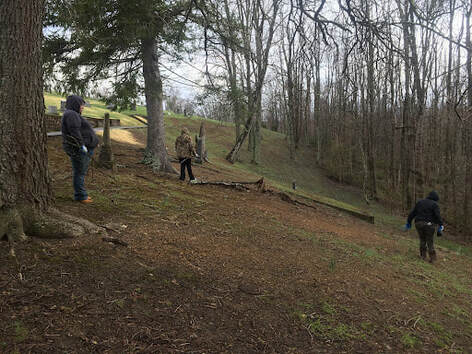 The Taylor County Historical and Genealogical Society hosted a clean-up of the Bluemont Cemetery on Saturday, April 9, 2022. The project was led by Megan Nielson, the current 2021-2022 Preserve WV AmeriCorps member. Each AmeriCorps member is required to complete two civic service projects in the community that they are serving. Ms. Nielson was born and raised in Grafton, West Virginia, and wanted to find a way to bring pride to her hometown, especially before Memorial Day. Assisted by the Taylor County Historical and Genealogical Society, Taylor County Corrections, and Leer Mine, Ms. Nielson and those who volunteered picked up any trash and tree limbs that littered the property. Ms. Nielson felt this project was important because of the depth of historical graves that are located in this cemetery. You can find the husband and a son of Anna Jarvis, the woman who established Mother’s Day, and the man who reportedly did the autopsy on John Wilkes Booth. It is also believed that there are individuals who died in the Buffalo Creek disaster buried here. 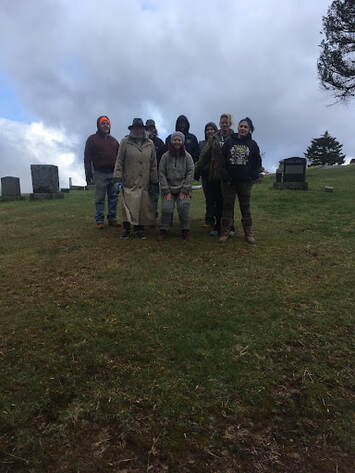 The history that surrounds Bluemont Cemetery is vital to the pride of Grafton, West Virginia. The cemetery itself was donated by a Mr. Blue. Grafton, West Virginia has a rich history that is consolidated within this one cemetery, including an African American woman who endured Jim Crow, but had her forgiveness etched onto her grave for all to see and know her story. Despite the cold weather during the clean-up, it was successful thanks to the hard work of the Taylor County Corrections volunteers and the dedication of the members of the Taylor County Historical and Genealogical Society. In the coming months of the 2021-2022 term, Ms. Nielson is excited to begin work on her second Civic Service Project and figure out how she can effectively serve the residents of Grafton. Megan NielsonMegan Nielson is the Preserve WV AmeriCorps member serving with the Taylor County Historical and Genealogical Society during the 2021-22 program year.
The Monroe County Historical Society was fortunate to be able to present a program for the March 15th meeting of the Monroe Connections CEOs. The lesson for the group was “Fashion through the Decades,” which focused on fashion from 1920-1990. AmeriCorps Member V. Pontius brought a few items belonging to the Monroe County Historical Society for display. These date to about 1890 and are believed to have been donated by Hal Peterson. These items are an excellent illustration of how the ladies would have one pattern and the dressmaker would be able to create a variety of items. The distinctive pattern of the pinking shears hint that these items had the same dressmaker. The items also illustrate how the ladies could decide where the “stays” or “bones” of the garment could be sewn into different places. The garments on display illustrated the different construction options used to create differing bodices from the same pattern. In the first years of the 1890’s decade, the fashion was to have sleeves with a small vertical puff at the shoulder. The huge puffed sleeves that are often linked to this decade declined in fashion in 1895. Women tailored their outfits to have an hourglass shape. Around 1897, the designs began to slowly favor the straight-front corset. vernessa pontiusVernessa Pontius is the Preserve WV AmeriCorps member serving with the Monroe County Historical Society during the 2020-2021 and 2021-2022 program years.
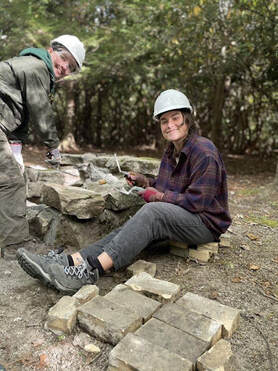 When I first began my AmeriCorps service term at the New River Gorge National Park and Preserve in September, I immediately began helping with a preservation project at Grandview, one of the most popular areas of the Park. This project primarily involved restoring 30 stone hearths, a handful of which were built in the 1940s by the Civilian Conservation Corps (CCC). Concurrent work was also performed on Grandview’s entrance pylons, culvert, and shelter 1 with its respective CCC built fireplace and chimney. This undertaking began as a project proposal by the Gorge’s 2020-2021 AmeriCorps member, Moira Gasior. The project was soon backed by the National Park Service’s Historic Preservation Training Center (HPTC), who, on September 13th 2021, sent a masonry crew to the site to provide professional support. Following initial condition assessments and documentation, preservation of the hearths began with demolition, a phase of treatment where obstructive mortar and poor joints were chiseled away. The stones were then repointed and, if need be, reset. New fireboxes were reconstructed at an angle to promote water runoff and mitigate future moisture damage. Lastly, new grills were anchored and installed. Intentional removal of biological growth on the surface of the stones was avoided so as not to disturb the natural patina of moss and lichen which had accumulated over time. Depending on the severity of deterioration, preservation of one hearth could take up to a week to complete, not including the 10 days of covered curing time afterwards. Some hearths required minimal intervention, with only the removal and repointing of shallow cracked joints and the relaying of fireboxes. Others, however, quickly fell apart due to failed joints and missing mortar, sometimes requiring multiple stones to be reset. Two weeks into the project, a voluntary week-long workshop was sponsored by HPTC at Grandview for members of NERI staff and other National Park Service affiliates. Participants engaged in lectures and learning modules and were provided hands-on guidance by experts in the field of historic brick and stone masonry. This project was initially expected to take six weeks but was extended to accommodate the preservation of additional fireplaces. After nearly two months at Grandview, work officially concluded the week of October 25th. 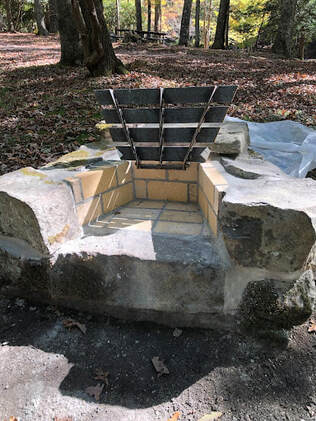 A restored hearth A restored hearth Not only do these hearths have historic significance as CCC built structures, but there is also a great deal of public sentiment towards them. During this project, I heard recollections from visitors who had come to Grandview back in its heyday - when the shelters were always busy, the trails were lively, and every hearth had an occupant. It was an extremely popular excursion for families and friends. In expectation of spending the whole day there, groups would have to get to the Park early to secure a good spot. However, as time progressed and tourism within the Park decreased, so did the use of these hearths. This led to a lack of maintenance, causing many of them to fall into disrepair. Some of the hearths were forgotten entirely as they resided farther in the woods and eventually became reclaimed by nature. According to reports, tourism at Grandview increased by 300% last summer, likely due to the Gorge’s newly obtained designation as a National Park. To this effect, there was no better time for this project to happen. Our daily work at Grandview never saw a shortage of visitors, many of whom showed interest and appreciation at our efforts. People would often approach us with questions or comments about the work. Some of the hearths which were freshly preserved saw use almost immediately after being uncovered. Overall, the consensus about this project from both the Park and public seemed to be an air of excitement at the possibility of reviving what once was. Kate CaplingerKate Caplinger served as a Preserve WV AmeriCorps member for the New River Gorge National Park and Preserve during the 2021-2022 program year.
On a brisk cold fall night, walking down the brick paved streets that make up Main Street, you can hear the Elk River flowing. This leads me to imagine what it would be like to live in Sutton when it was the most productive and the town was thriving. I can imagine our little town bustling with the sound of horse hooves hitting the brick, industry, and people. The very people who created the foundation of what I call home, Sutton West Virginia. The rich history and events that took place in this small community are much more than a recollection, but a story that begins with the very bricks I stand on. Sutton was first settled in 1792 by Adam O’ Brien and is the geographical center of the state, only to be burned to the ground nearly 50 years later. The fire left destruction and only six buildings with structure intact. Rebuilding almost from scratch, Sutton remained a small county seat until the timber industry developed and Sutton became a commercial center. Throughout the years Sutton has been home to many businesses. The store fronts thrived with businesses such as pharmacies, restaurants, retail shops, banks and even motels. Among some of the first settlers to Sutton were the Carpenters. Jeremiah and Benjamin Carpenter settled in Sutton and shortly after were killed by American Indians. To this day and many generations later the Carpenter family still reside in Sutton and have owned the motel that resides in the historic district. Sutton's Main Street is filled with original buildings and a lot of them are still being used today. Specifically, the courthouse which is for the entire county and is in the center of downtown. Built in 1882, this is one of the earliest remaining courthouses in West Virginia. It was the second brick building built in town. Across from the courthouse is home to the Landmark Studios of the Arts Community Theatre, built in 1886 as a Methodist church and renovated as a theatre in 1988. Sutton's historic district has always held importance to the community and consists of eleven square blocks. Residences date predominantly from the mid-19th century to early 20th century. Sutton's historic district was hit with yet another devastating fire in 2005. It destroyed 3 major buildings, one of those being the Braxton Newspaper. The privately owned buildings were donated to the town with hopes of restoration. It is our hope to use the building's façade and build a community park within the structure. Plans have been started and grants have been applied for. The community park would be such a great asset for our community while keeping the historic district intact and as beautiful as it once was. Whether it be the beloved courthouse or a building that has no great significance other than the bones itself, each one comes with history and the longing to be found and appreciated again. briar williamsBriar Williams served as a Preserve WV AmeriCorps member for the Sutton Community Development Corporation during the 2020-2021 program year.
The Braxton Democrat became the first newspaper to serve Sutton, West Virginia but most importantly it served Braxton County. It worked as the main communication source and news outlet for many years. In a time where technology barely existed, and information sharing was difficult, our newspaper was the foundation of communication for our county. Although the name Braxton Democrat was officially in 1982 the newspaper dates to the early 1900s. Beautifying and enhancing parts of the historic district has been a focus and interest of mine as an AmeriCorps member “the old democrat” as our town people call it is located right in the center of our historic district. It is two stories and concrete and wood. Through out the years and many great articles in between the building has seen its better days. I have struggled on how to start beautifying my town and helping our progress. What can I do? What can my town do? Picking up trash from our littered sidewalks, planting flowers in our garden and decorating the pots in town can only do so much when the actual eye sores come from the abandoned buildings that fill our downtown. The month of May is West Virginia’s statewide clean up month. During the clean up myself and volunteers took the entire day to bring the “old democrat” building back to life. The building was consumed with chipped paint and dirt and was getting lost in the eye of passing traffic. Before our day started the building was dark gloomy grey and a lime green that could make your stomach turn just by looking at it. We decided it needed to be a bright welcoming color and historically correct. Choosing paints we chose a concrete grey and a barn red. The red covered the grey beautifully. A lot of citizens stopped to admire our work and to praise us for our efforts. It is my hope that with a little bit of hope, elbow grease and paint we can save each building one by one and bring it back to its original potential. I believe that business owners who are in search of properties are more likely interested in buildings that look fresh and show future potential before walking inside. We need to renovate the outside of the buildings and business as much as possible in Sutton to draw in more tourists and new neighbors. It all starts with an idea and ends with some paint. briar williamsBriar Williams served as a Preserve WV AmeriCorps member for the Sutton Community Development Corporation during the 2020-2021 program year.
Beginning a service year in September 2020, in the height of a COVID-19 uncertain world, was a challenge. Having served a year as an AmeriCorps previously, part of my service that I loved was getting immersed in a community and connecting with folks on a face level. Serving with the West Virginia Association of Museums (WVAM), I was excited to get to know museum and art professionals from around the state and explore sites that were beyond my Mountaineer Country-centric world. The big yearly gathering for WVAM is the annual conference, which is held in a different West Virginia town each year. This conference is a time for museum workers around the state to network, grow professionally, and also to relax and get to know their colleagues at other sites. By the time I started my service, the 2020 conference had been cancelled and 2021 was up in the air. It was eventually decided that the safest course of action would be to host our annual conference virtually, much like a lot of other events around the country. This was unchartered territory for all of us at WVAM. We had to figure out the technical aspects, while also crafting a virtual experience that would still be worthwhile and engaging for our members and other professionals. We had to cancel some fun aspects of previous conferences - like the annual banquet and raffle dinner, and the pre-conference excursions to local museums and cultural sites. Altogether, we were able to craft educational and social sessions throughout the week of March 22nd-26th, ranging in topics including grant writing, public arts, paper conservation, black COVID-19’s impact on museums in West Virginia, and more. One of my favorite sessions of the week was the session hosted by Black in Appalachia. I’ve admired their organization and the important work they do, and it was a great opportunity to work with them and bring them to a virtual audience in West Virginia that is equally excited about the work they’re doing. I also really enjoyed one of the social sessions I led, the “Artifact Show & Tell.” We wanted to replace some of the networking and socializing opportunities that are normally present at a conference with light-hearted evening social sessions. While it was a bit awkward at first to adjust to a virtual format, the show and tell session ended up being a fun way for art and history nerds to show off items in their personal collection or at work that they find fascinating, weird, or just plain interesting. After the conference was over, we sent out a survey and collected feedback to see how the conference was received by the attendees. From the responses we got, most folks were very pleased with the conference, which was a huge relief. Here’s some comments that we received: “I appreciated the great variety of sessions and that they were strung out over a week, which made it easier to work into my busy schedule. I also liked the social activities--it is what I miss most about conferences.” “It was much easier for me to access because it was virtual. I would not have been able to attend an in-person conference. It tends to be too far from the Eastern Panhandle.” “I attended multiple sessions for the West Virginia Association of Museums Virtual Conference and enjoyed them all, but 'Black Narratives, Exhibition, and Engagement' stood out in particular. The erasure of Black histories in Appalachia makes researching, understanding, and interpreting sites associated with Black communities difficult. The resident-driven work that Black in Appalachia does is remarkable” “This year's WVAM conference was a great mix of practically and theoretically based sessions that helped to round out my current studies at WVU and my continuing field work outside of the classroom.” Planning and organizing this conference was a lot, but it was a relief to see the feedback and know that folks enjoyed and benefited from it. Personally, it was a great learning experience for me to see what goes on behind the scenes at a large event like this - marketing, session planning, schedule coordinating, and registration - it can be a lot. Add on top of that technical issues, and things can get a little hectic. Although COVID-19 forced our hand into hosting a virtual event, I think there are a lot of benefits to virtual gatherings that we discovered. It can be easier and more accessible for folks to attend due to costs and the time commitment, and we were able to invite speakers from outside of the state that maybe wouldn’t have been able to attend an in-person one. Although my service year is ending with WVAM, I am looking forward to following how the 2022 conference (which might be in-person!) develops and hopefully will be able to attend myself. LAUREN GRIFFINLauren served as a Preserve WV AmeriCorps member for the West Virginia Association of Museums during the 2020-2021 service year. During the past year, I made several trips to Ronceverte to help organize the city museum at its new location on the second floor of the Clifford Recreation and Community Center, following the sudden passing of Doug Hinton, the long-time curator of the museum. My primary objective was to inspect more than 50 boxes of artifacts and documents and prepare a computerized catalogue of the contents, which I completed. In a random box, I discovered an incredible, priceless piece of West Virginia history: a 1796 land deed from the Governor of the Commonwealth of Virginia to Alexander Robison of Greenbrier County! It was folded firmly and stored in an envelope for many years, and I refused to harm a 200+ year old document by attempting to unfold it. Instead, I found a donor and researched a firm that could safely unfold, flatten, and frame the deed. I found a professional artifact restoration firm in Ohio, Old World Restorations in Cincinnati. They did an amazing job of safely unfolding the deed document, flattening it, and framing it in archival glass. I was proud to hand-deliver the framed deed to Mayor Smith in Ronceverte in April 2021. I discovered many other gems in the Ronceverte Museum’s collection. Highlights from the 50+ boxes include the following: 1. 3 body tags with wire attached with notes from coroner; two have no date, but one is marked 'found May 23, 1963.' 2. 1880 Two small original photographs of West Virginia native Pearl S. Buck's parents Reverend Absalom Sydenstricker and Mrs. Caroline Stulting Sydenstricker in 1880. 3. "Good for 5 cent" tokens, five total. Rare. Often called trade coins, they were especially used after the Civil War as a substitute medium of exchange instead of nickels; they had limited use and were often issued by a private company, group, association or individual. 4. 1890s-1902, Set of funeral home or cemetery plot records in delicate, damaged condition. Interesting look into what people died of in Ronceverte in the late 19th and early 20th century. One page has a record of a black man who was killed, but he was not given the dignity of his name, age, date of death and location like the white West Virginians on the other pages.. 5. 1881-1889, book of State of West Virginia court judgements. If you take the time to read the handwriting, it has an interesting look into what was brought to court in late 19th century West Virginia. 6. 1885-1887, three autograph books; two of Nellie Longfellow, one of Laura Forgelson. Very cute entries from school friends and family members. 7. Some kind of Ronceverte athletic uniform from the 1950s-1970s of a top and shorts, jockstrap included! 8. White folder with material relating to petitioning Colonel Clifford of Ronceverte for the Medal of Honor. He served with distinction in World War II and the community center housing the Ronceverte museum is named after him. It is worth noting because not many people know about what goes into the process of petitioning for a Medal of Honor. 9. Register of Hotel Dickson, Ronceverte 1888, including a signature of President Glover Cleveland with a cute notation “and Mrs. C” from October 11th, 1888! During my final visit to Ronceverte at the end of my AmeriCorps term, I cleaned all the exhibit cabinets, window wells, and floor. I compiled all my work and ideas for the future of the museum into a Final Report, which I presented to Ronceverte City Administrator Pam Mentz. The report includes suggestions on how the city can engage the local schools and further preserve their collection. The Ronceverte Museum has great potential, and the Final Report for the next AmeriCorps member assigned to Ronceverte will help them build off of my service. It was my sincere pleasure to work with the city of Ronceverte and discover the jewels contained in its museum. Megan Ksenia bradnerMegan Ksenia Bradner served as a Preserve WV AmeriCorps member with the Preservation Alliance of West Virginia during the 2019-2020 and 2020-2021. Preserve WV AmeriCorps tells the story of two historic churches through new interpretive signs9/15/2021
The Monroe County Historical Society was awarded a grant from the West Virginia Humanities Council for the creation and installation of interpretive signs for the two historic church buildings owned by the society in Union. Both buildings have undergone extensive repairs over the past two decades. Ames Clair Hall, formerly the Ames Methodist Episcopal Church, is available for use as a performance and meeting space. The First Baptist Church building still requires extensive repairs before it can opened to the public. Both of these churches were originally built for the white congregations and after the Civil War were purchased by the African-American members of the congregation. One man, James Clair, and his descendants were instrumental to the formation and success of both the Baptist and Methodist congregations and these churches. James Clair was baptized into membership at the First Baptist Church in Union in 1868. His family remained active in the community. His son, James Clair Jr. was also baptized into the First Baptist Church. His grandson, Matthew Clair, became one of the first two African-American bishops of the Methodist Church. The slave James Clair was born in 1810 and was purchased in Richmond Virginia by the owners of the Salt Sulphur Springs resort to work at this resort in Monroe County. While the owners of the resort rode horses back to Monroe County, the slaves had to walk about two hundred miles to the “Salt”. Mrs. Kate Clair, a daughter-in-law, relates that the slaves were guided on their journey by forked sticks placed at the forks in the road to indicate which way their owners had taken. Generations of church members have worshipped in these two historic churches. Both buildings were deeded to the Historical Society after membership declined. Justine Nall, of Union, got the project started. Her father, Russell Newsome played the organ for services when Ames Clair Hall was the Ames Memorial Methodist Church. Marilyn Adamson provided information about the First Baptist Church where she, her great-grandmother, grandmother, and parents worshipped. Photos show the interpretive signs installed. The signs will help expand the knowledge of the buildings and the importance of the church community on the wider community for the people of Monroe County and surrounding areas. This project received financial assistance from the West Virginia Humanities Council, a state affiliate of the National Endowment for the Humanities. Any views, findings, conclusions, or recommendations do not necessarily represent those of the West Virginia Humanities Council or the National Endowment for the Humanities. Vernessa PontiusVernessa served as a Preserve WV AmeriCorps member with the Monroe County Historical Society in Union during the 2020-2021 service year. 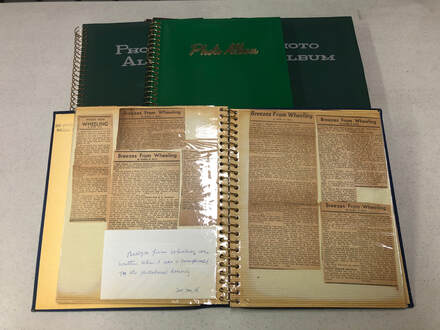 Mabel Hull’s Scrapbooks with her clippings from The Wheeling News-Register and the Pittsburgh Courier (OCPL Archives, Photo taken by Emma Wiley) Mabel Hull’s Scrapbooks with her clippings from The Wheeling News-Register and the Pittsburgh Courier (OCPL Archives, Photo taken by Emma Wiley) For months, I looked for evidence of a Mabel Hull in Wheeling, and came away with only scraps of information--until I finally found her family. Mabel Hull was an African American newspaper columnist, working woman, and mother who lived in Wheeling, WV during the mid-20th century. I became interested in her story after browsing several scrapbooks of her newspaper clippings that had been sitting in the Ohio County Public Library Archives, gathering metaphorical dust. Mabel’s columns ranged in topics from society news to local events, painting a vivid picture of a vibrant Black community in Jim Crow Wheeling. Female journalists--let alone Black female journalists--were underrepresented in the mid-20th century, so I decided to find out more about Mabel with the intention of doing a relatively quick article about her history and work. I scoured censuses, archival material, newspapers, and other records and could only find bits and pieces here and there. I asked people who seem to always know everyone in Wheeling, past and present, and they had never even heard of Mabel. She felt like a ghost. My last ditch attempt was to find her descendents, but I wasn’t hopeful, considering the majority of her six children were dead. Through a son’s obituary, I managed to track down an email and decided to shoot my shot--within 24 hours, I was in touch with several of Mabel’s grandchildren and her only living daughter, who made Mabel come alive. They shared stories, memories, anecdotes, and photos that quadrupled my understanding of Mabel and opened new doors to historical documentation I didn’t even know to look for. Apart from the scrapbooks sitting in the basement archives of the Library, there is very little trace of Mabel left in Wheeling. The street where she lived, Morrow Street, no longer exists due to urban renewal, none of her direct descendents live in Wheeling anymore, and the department stores she worked at closed long ago. After researching and learning Mabel’s history, I used my platform to share her almost-forgotten story with the Wheeling community through an article on Weelunk and a public lecture at the Library--yards away from where her scrapbooks lived. The reception of Mabel’s story was amazing. Community members at the lecture questioned why her story has been covered up for so long in a town that loves to explore its local history--I encouraged them to continue to search for others like Mabel, amazing histories that have gone untold. Some of Mabel’s descendants watched the livestream of the lecture and Gina Stewart, Mabel’s granddaughter and strongest advocate, told me that I had found “the pearl in the shell” because she never stopped believing that her grandmother’s story was worth telling. Emma WileyEmma is the Preserve WV AmeriCorps member serving with Wheeling Heritage during the 2020-2021 program year. |
Preserve WV StoriesCategories
All
Archives
August 2023
|
Get Involved |
Programs |
Contact UsPreservation Alliance of West Virginia
421 Davis Avenue, #4 | Elkins, WV 26241 Email: [email protected] Phone: 304-345-6005 |
Organizational Partners:
© COPYRIGHT 2022 - PRESERVATION ALLIANCE OF WEST VIRGINIA. ALL RIGHTS RESERVED.

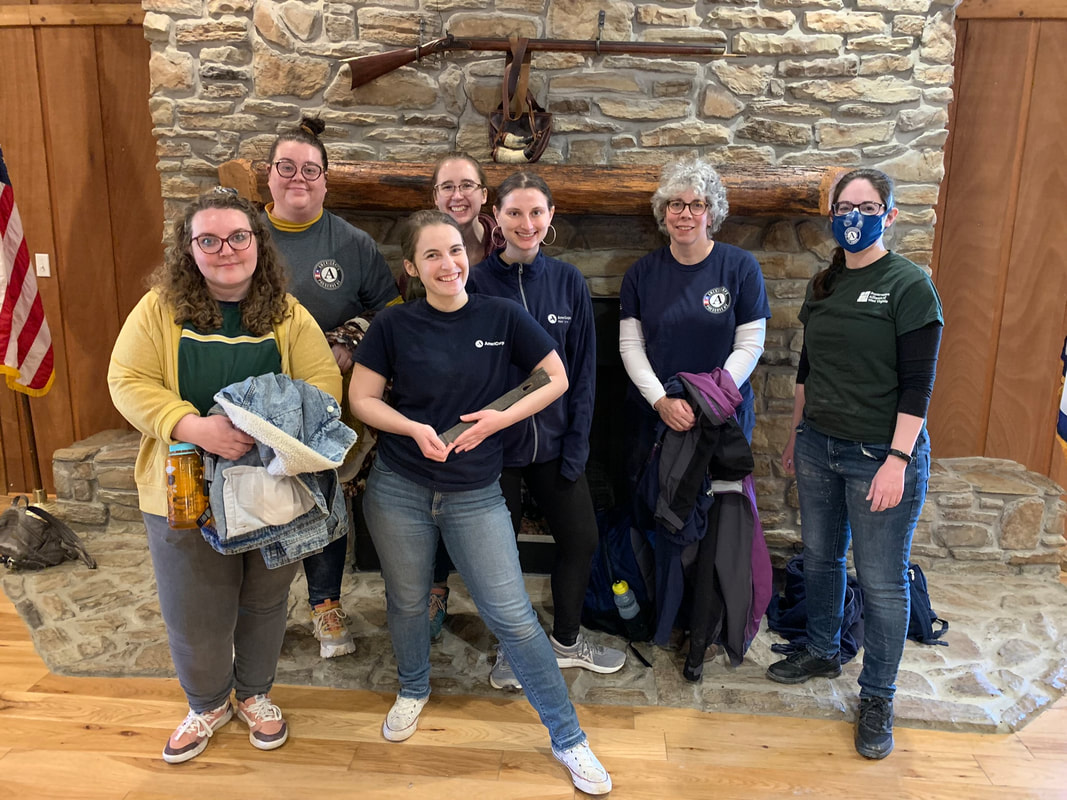
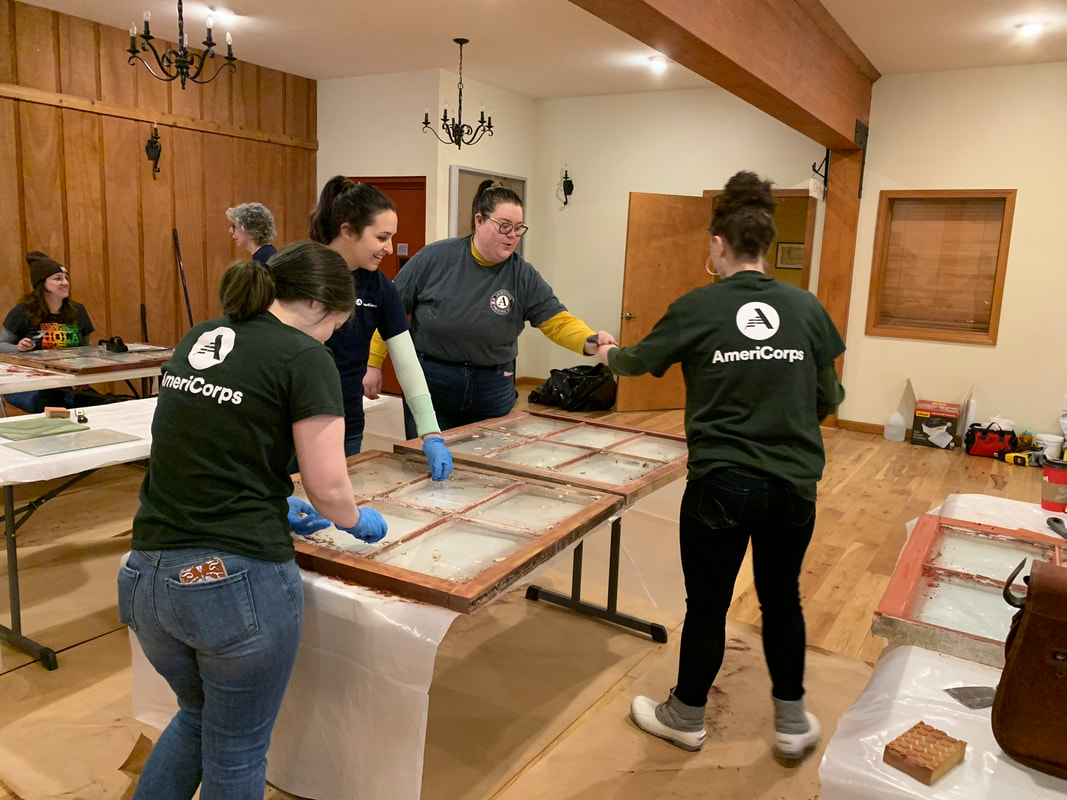
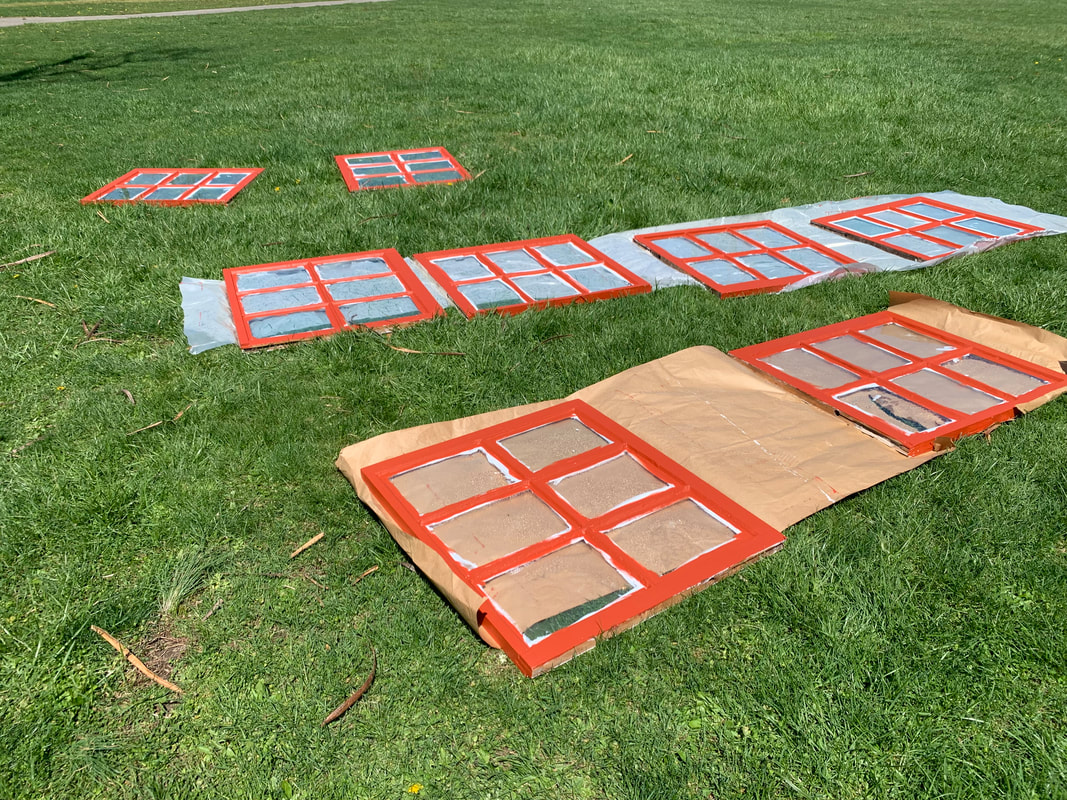
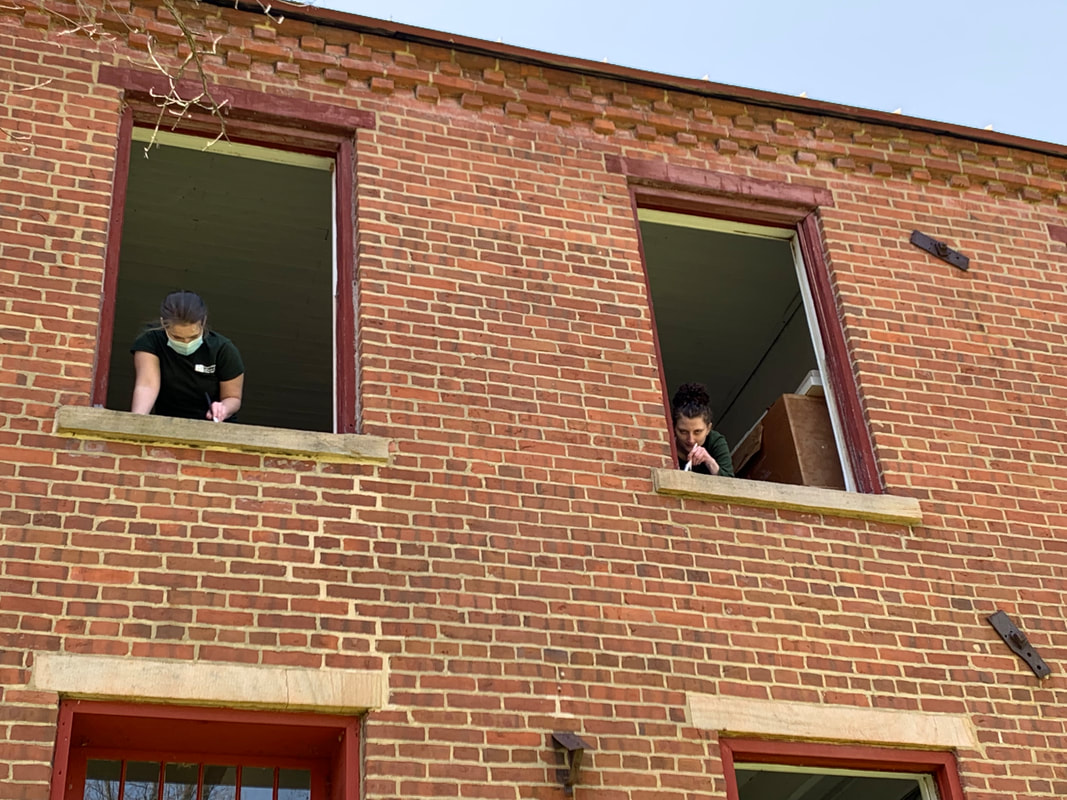

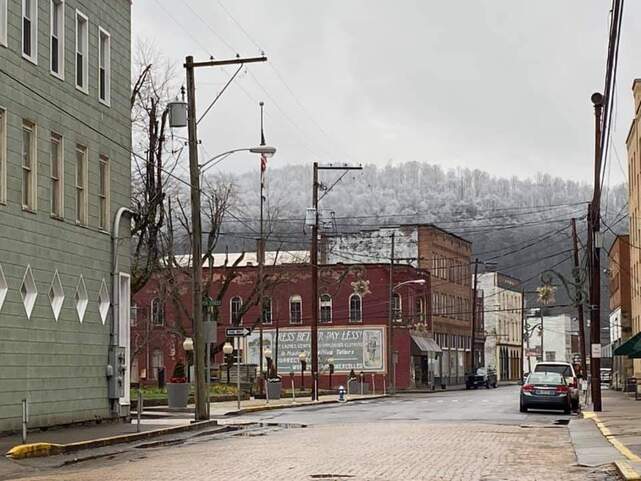
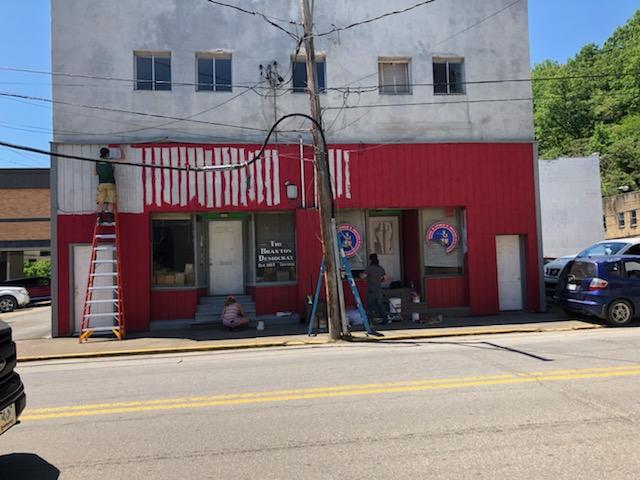
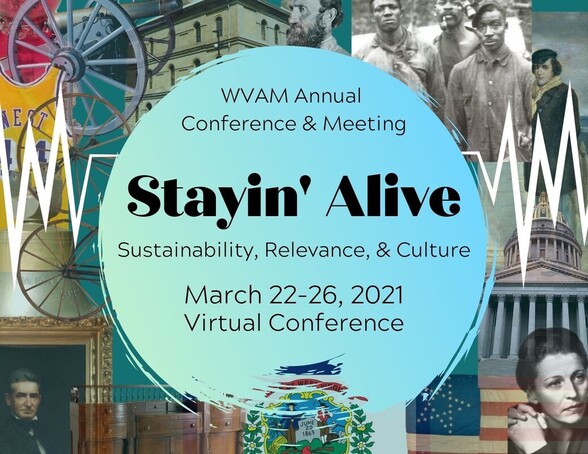

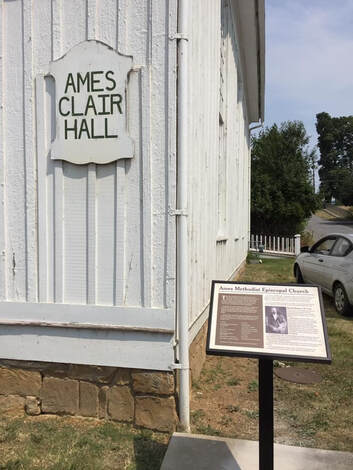
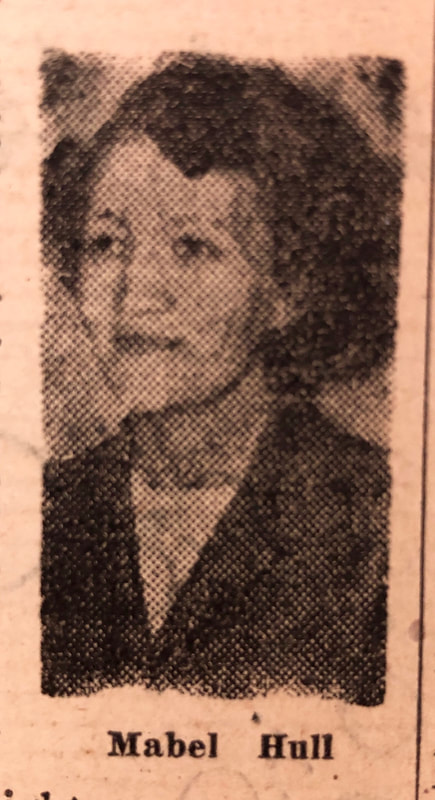
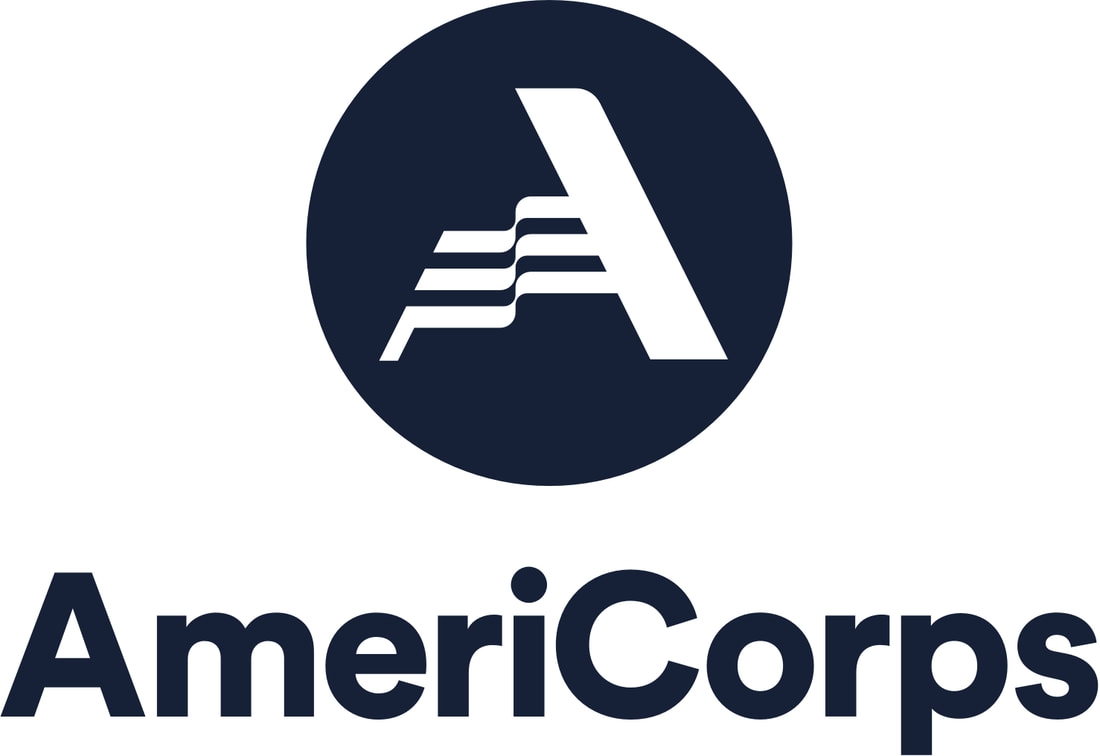
 RSS Feed
RSS Feed



